Where in the world is Frida Kahlo? These days, the answer is: almost anywhere you can imagine.
María Luisa Parra-Velasco, a Spanish language professor at Harvard, has an assignment that she gives to some of her students. “I ask them to go out into their communities and find Frida Kahlo,” she says. The exercise is part of an online Harvard Extension course that she launched last year, titled “Frida Kahlo’s Mexico.” They share their discoveries over a web portal from countries as far away as South Africa and Brazil—vials of nail polish; lip glosses; snapshots of Kahlo-themed cafés, restaurants, and street murals; bars of soap; posters; and other miscellaneous items. All exhibit the Mexican artist’s world-famous features: hair braided into a crown atop her head and adorned with colorful flowers, a proud monobrow, and a defiant gaze.
What is now affectionately known as “Fridamania” has been on the rise for several decades. And the artist’s image has materialized with particular frequency in 2017, in increasingly diverse forms and mediums. There was a Frida lookalike mob organized by the Dallas Museum of Art on the occasion of Kahlo’s 110th birthday, for which they attempted a Guinness World Record for the most-ever Fridas, numbering an estimated 1,100 (the record is currently pending approval); a set of Frida emoji that iPhone users can employ as emotional surrogates; a new Frida Kahlo Museum near Cancun, an institution that contains no original artworks, but offers a Kahlo “experience,” and is connected to a restaurant where projections of the artist’s face appear on your dinner plate; and, somewhat horrifyingly to those protective of her legacy (and familiar with current European politics), in the form of a bracelet decorated with Kahlo’s visage, worn by British prime minister Theresa May during her catastrophic Conservative party speech earlier this year, apparently to communicate that May, like Kahlo, is a woman of the people.

Photo by @kiaralouise19, via Instagram.
This ever-growing fascination with the artist comes amidst a culture of heightened identity politics in the U.S. Since her death in 1954, Kahlo has become a global symbol of resilience against adversity and patriarchal oppression, a feminist icon, and, thanks to her affairs with both men and women, a cult figure in the queer community. Through her dress and her politics, Kahlo aligned herself with Central America’s marginalized indigenous populations. And her rise to prominence in the popular imagination—through the ’80s and ’90s and on—has coincided with the ascendance of identity politics. All of these factors have contributed to her becoming, as Vanity Fair noted sardonically in 1995, “a politically correct heroine for every wounded minority.”
To some observers, the pervasiveness of Kahlo’s image (and its related commercial appeal) would have amused and pleased the artist. She wanted to be seen. She painted herself, repeatedly—sometimes in the guise of a saint or martyr, as in The Broken Column (1944), which shows her suspended over an open landscape, her body fractured down the middle and peppered with nails, an allusion to the many surgeries she would undergo following a childhood accident. Her clothing, collected from various indigenous peoples, including the Tehuantepec in Southern Mexico, was not only unconventional for someone of her privileged upbringing (she was the daughter of a German Jewish immigrant father and a Mexican-born mother), but designed to make a political statement.
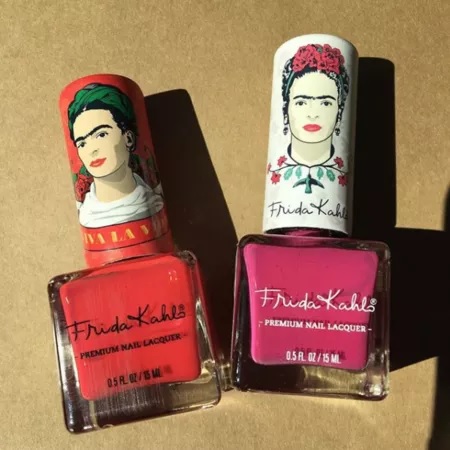
Photo by @pazmorada, via Instagram.

Photo by @1964threads, via Instagram.
For others, Kahlo’s transformation into a global brand has come at a cost. Adriana Zavala, a scholar of Latin American art at Tufts University and a curator of Kahlo’s 2015 exhibition at the New York Botanical Garden sees the ubiquity of Kahlo paraphernalia as having contributed to a three-decade watering down in the understanding of the Mexican artist’s contribution to art history. “The Theresa May instance is so interesting,” said Zavala, in that the cooptation of Kahlo’s image by a politician whose party favors business and a shrunken welfare state illustrates “how the popular perception of Kahlo is so distant from who she was as a political person, as a member of the avant-garde.”
The cult of Frida Kahlo, and the widespread commercial use of her image, is a phenomenon that has taken on a life of its own.
Of course, there’s no way to know for certain whether Kahlo’s legacy is being sold out by companies deploying her image, or whether a Kahlo-branded nail polish is a gateway to political awakening. Parra-Velasco addresses the long-term impact of Kahlo’s commodification in her online course, but said the jury is still out. “We don’t really know what the effect is yet,” she said. “What I see is people buying these things as a way of buying something of Frida, who they know they like. It would be even better if, after buying that thing, they get intrigued about who Frida was, and where she came from—what her legacy is as an artist and as a woman. That would be a wonderful route, right?”
Whatever one’s opinion, it’s clear that the cult of Frida Kahlo, and the widespread commercial use of her image, is a phenomenon that has taken on a life of its own—quite separate from the body of work she left behind.
The growth of Fridamania is traceable to several landmark moments, including the 1982 exhibition of Kahlo’s work, shown alongside that of Tina Modotti, at London’s Whitechapel Gallery; the artist’s 2005 Tate Modern retrospective; and Madonna’s acquisition of certain Kahlo paintings, and frequent championing of the artist as a personal hero.
But every scholar I spoke to for this piece cited Hayden Herrera’s wildly successful 1983 biography of Kahlo, which led to a 2002 Hollywood movie starring Salma Hayek (with Madonna herself reportedly vying for the title role), as the origin point of Fridaphilia. The book has been translated into 25 languages, including Arabic, Chinese, Hebrew, and Lithuanian.
“It certainly surprised me,” said Herrera of the book’s reach. She had written an article in Artforum about the Mexican artist while working on her doctoral dissertation, which prompted an invitation from the poetry editor of Harper & Row to extend her research into a biography. “Very few people had heard of Frida Kahlo at that time,” Herrera continued. “Harper & Row hardly even knew they had this contract, because then my editor was fired and they completely forgot they had a contract for someone to write a biography of Kahlo,” she said.
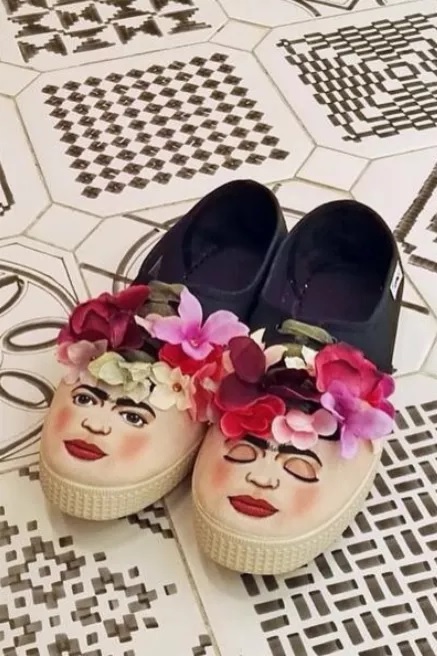
Photo by @mr.pinnot, via Instagram.
The book is a warmly and colorfully told narrative that traces the character and artistic development of Kahlo, who had a “mischievous glint in her eye” and was known and loved as much for her “devilishness” and pranks as for her alegria, her innate love of life in the face of pain and suffering. It presents a psyche molded largely by her near-fatal accident in 1925—when her school bus collided with a trolley car and left her impaled by a handrail, subject to a litany of invasive surgeries, and ultimately crippled—as well as by her heated marriage to the muralist (and serial adulterer) Diego Rivera, and their life in the avant-garde bohemia of Mexico City.
It launched with a tiny initial print run—and then it began to sell. “I hoped that it would have readers among feminists and artists, but I didn’t think it would have this worldwide, mythic impact,” she said.
But Kahlo’s story, one of physical suffering, passion, and emotional turmoil, had universal appeal. To those north of Mexico, her life, lived alongside monkeys and pre-Colombian artifacts, looked seductive and exotic. And in Herrera’s book, her art is woven seamlessly into this picture, suggesting a symbiosis between her paintings and the events of her life, much like the eventual film, where live-action scenes often morph into the images of her paintings and vice versa. This fluid relationship is one that Kahlo herself would attest to—her primary subject matter was herself, her love for Rivera, and her pain.
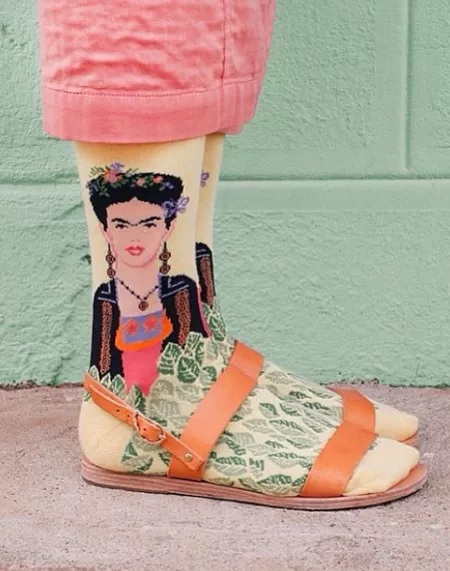
Photo by @wglosangeles, via Instagram.
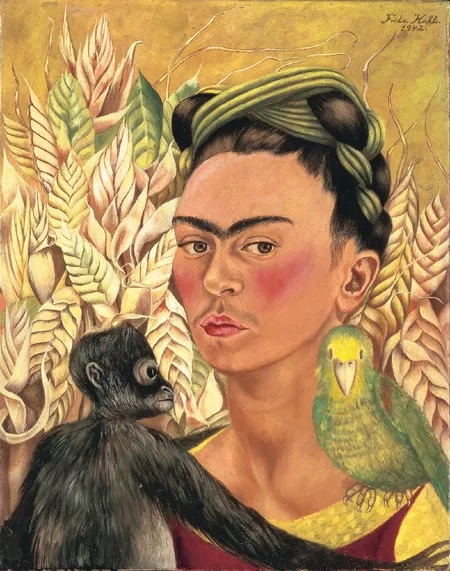
Frida Kahlo ‘Autorretrato con chango y loro’ 1942
And it is this emphasis on the elements of her biography, and the artist’s character, that has seared her into the public consciousness. But some scholars contend that what has become the popular narrative of Kahlo privileges her suffering and her romantic relationship over her politics, her artistic innovations, and her Mexicanness, a complaint that is sometimes leveled at Herrera’s biography. “It’s a wonderful book,” says Parra-Velasco, “but it has also received some criticism about the author presenting her own perspective on Frida,” emphasizing the physical struggles that she went through, the love, the passion she had for Rivera.
Zavala also believes the book has ultimately made Kahlo’s intellectual history secondary to her personal story, and overshadowed other interpretations of her work, including those offered up by Chicano artists who played a role in rediscovering the Mexican artist’s work in the 1970s. (The scholar is in the beginning stages of a project with the Chicana artist Amalia Mesa-Bains to shed light on the role that such artists played in bringing Kahlo’s work to light.)
“I have enormous respect for Hayden Herrera, and there’s a lot of art history in that book and in Herrera’s subsequent work,” Zavala says. “But as a Mexican living in the United States and an art historian, my perspective is that it over-determines a sort of mainstream, white, feminist interpretation of Kahlo that diminishes the way that her work is imbricated in the specificity of Mexican history and politics. You get an understanding of what was happening in Mexico politically and socially, but that understanding is secondary to a very lachrymose, psycho-biographical representation of Kahlo’s pathologies.”
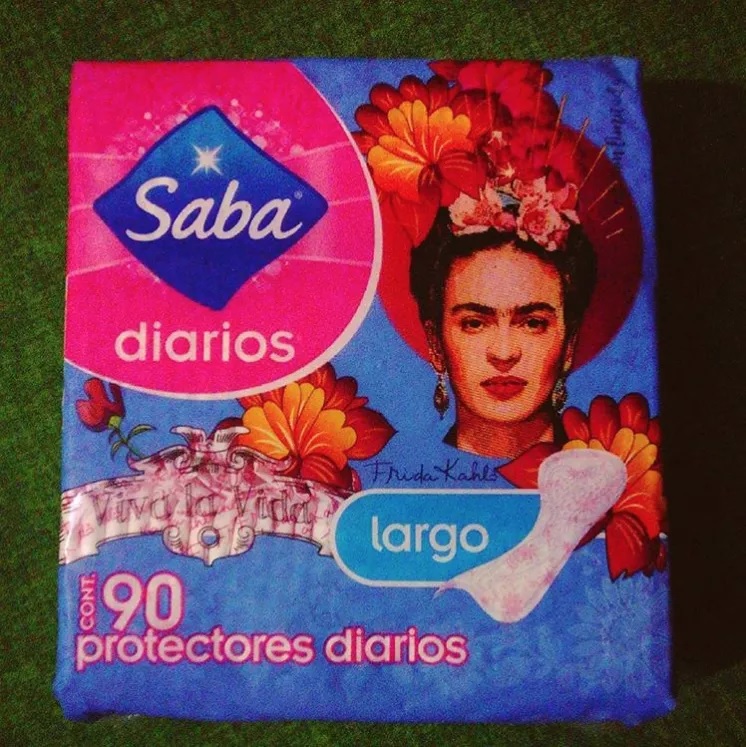
Photo by @oskahlo, via Instagram.
Whether or not the prevailing narrative surrounding Kahlo gives the full picture of her life and work, it’s one that is eminently brand-able, to the point that a political conservative like May, the leader of a party known to be tough on immigration and a champion of free market capitalism, can somehow see herself in the company of a Communist who championed those marginalized by society.
“On top of everything,” says Zavala, noting an additional irony, “that trinket may have been produced under very oppressive labor conditions in some sweatshop somewhere in the world.”
In the pantheon of globally recognized artists, Kahlo is hardly the only one to have been heavily merchandized (though it’s hard to imagine any other artist in history having been turned into commercial objects more than Kahlo.) Nor is she the only artist to have had her image deployed on objects that have so little to do with the shape of her life and work. In 2001, Kahlo’s face appeared on a U.S. postage stamp, prompting an outcry: Why would Kahlo, a Mexican and a Communist, be turned into an American artifact?
Today, her face appears on credit cards, objects whose significance and operation in the world is entirely removed from any interpretation of Kahlo’s life and work. (It finds a parallel in the Andy Warhol surfboard, which sells for up to a humble $18,000. Warhol likely never set foot on a surfboard, though he did once make a 1960s movie called San Diego Surf, during the filming of which he reportedly got quite sunburned.)
Such is the commercial appeal of Kahlo’s face that it has been trademarked by the Florida-based Frida Kahlo Corporation, which registered it with the U.S. Patent and Trademark Office in 2007. The company’s use of her image—one that is, anyway, reproduced illegally the world over—has drawn the ire of some family members over the years, and more recently, a reported legal battle over members of the family being denied information about product licenses the corporation has sought.

Photo by @amiguita72, via Instagram.
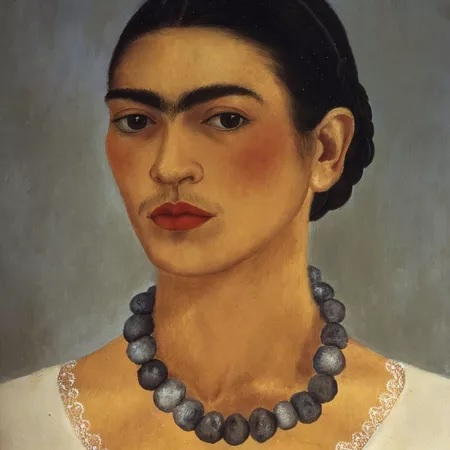
Frida Kahlo ‘Self-portrait with necklace’ 1933
The corporation was founded by Kahlo’s late niece, Isolda Pinedo Kahlo, along with a businessman named Carlos Dorado. It has widely granted licenses for the use of the artist’s visage and name for commercial goods, including for the new Kahlo museum near Cancun and two Kahlo-branded restaurants in Mexico (one associated with that museum), as well as the nail varnishes, a line of tequila, those credit cards, an electric coffee machine and coffee filters, and many other objects.
The corporation is distinct from the Diego Rivera & Frida Kahlo Museums Trust, which is owned by the Bank of Mexico and overseen by Carlos Phillips Olmedo, director of the Dolores Olmedo Museum in Mexico City, under whose auspices Kahlo and Rivera’s long-time former residence, the Casa Azul, is managed. The trust presides over the loan of Kahlo’s artworks, bequeathed, along with Rivera’s work, to the people of Mexico. (Applying for images of her artworks requires seeking permission from both the National Institute of Fine Arts in Mexico, as well as the Bank of Mexico.)
Since Kahlo did not have children—her accident shattered her pelvis, rendering her infertile—her niece was able to use her inheritance rights to create the “Frida Kahlo” trademark, which is now managed by Beatriz Alvarado, who is not a relation of the Kahlo family, but who took over from Isolda following her death in 2007. According to Alvarado, the organization is simply continuing what she sees as the artist’s self-promotional activities. “She sold herself, in a way,” says Alvarado, referring to the artist frequently painting herself, and dressing in such a way as to draw attention to herself. “We’re just doing what she did. People really identify with her attitude and her experiences as a human being. She went through a really hard time. She expressed herself in a way that no other women did back then.”
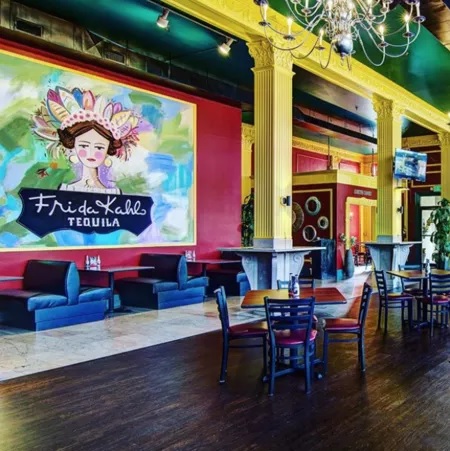
Photo by @fridakahlotequilaofficial, via Instagram.

Photo by @rogerioalves_70, via Instagram.
The corporation’s efforts to sell Kahlo’s name and image recently led it to Snapchat, which created a Kahlo filter on the platform in March, a tool that Alvarado sees as exposing a younger generation to the artist. “The world is bigger now, and we have to reach many more people,” she says. Alvarado’s impulse to spread Kahlo’s message via commercial channels—and turn a healthy profit—means she rarely draws the line when it comes to which products the firm is prepared to put the artist’s face and name on.
This indiscriminate approach to deploying Kahlo, the brand, may be inadvisable, ultimately damaging the value of the work itself. According to Anna Raginskaya of Morgan Stanley’s Blue Rider Group, which advises artists, estates, and foundations on financial matters, “a bad product can change the public’s perception of the artist’s practice in general, and might lead to the work becoming less desired by collectors and institutions.” A product is “bad,” she said, when it doesn’t align with the artist’s ethos or legacy.
“The popular perception of Kahlo is so distant from who she was as a political person, as a member of the avant-garde.”
Judged by this criterion, a decent share of Kahlo products clearly meet the standard for “bad.” But her legacy, at least among museum-goers, is thriving. The exhibition that Zavala curated of Kahlo’s work at the New York Botanical Garden—specifically about her interest in plants—drew over half a million people in 2015. Next year, London’s Victoria and Albert Museum will host an exhibition of Kahlo’s clothes that is sure to draw crowds. And scholars attest that the demand for loans of Kahlo’s work is such that—compounded with the rules of the Trust—borrowing them is a challenge.
The impact on her market, meanwhile, is harder to determine, since it comes up for auction so rarely, due to the fact that Kahlo only produced around 200 works in her lifetime and those largely remain in museum collections and within Mexico, where they cannot be sold due to strict cultural heritage laws. (A number of her works have even been declared “artistic monuments” by UNESCO.)
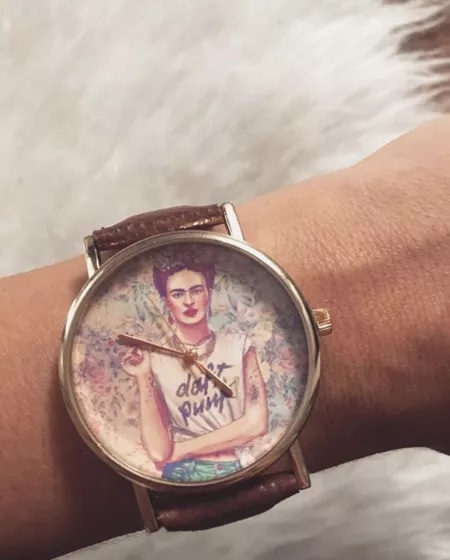
Photo by @melekbirgul, via Instagram.
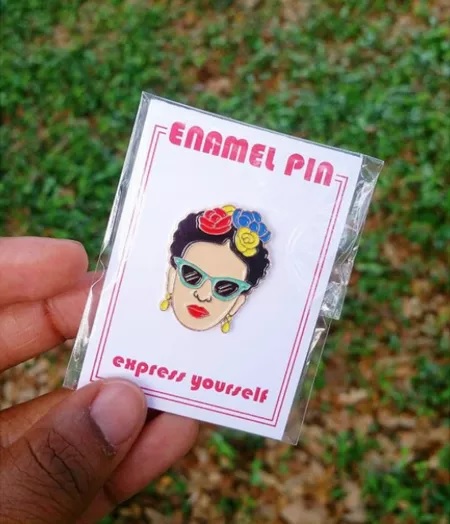
Photo by @whatsajasmine, via Instagram.
Even as the image of Kahlo herself proliferates on trinkets and in the popular imagination, images of her artworks are relatively hard to come by due to copyright laws enforced by the Mexican government. “Scholars have to pay to reproduce Kahlo paintings in their works, those fees are not waived,” said Zavala. “But the rest of the world produces Kahlo junk willy nilly, and people like Theresa May evidently buy it.…That says something about global capitalism—who gets to own someone’s image, and who gets to own someone’s artwork.”
We’ll never know, of course, whether Kahlo would have wanted her likeness to be quite so omnipresent, and so divorced from her work. The concept of droit moral, or “moral rights,” allows artists to have a say in the decisions that affect the ways they’re perceived, but Kahlo left no such instruction. (Note to all artists: If your image is an asset, leave clear instructions about how it’s used.)
But the fetishization of Frida has a silver lining. While generating superficial readings of her life and work, the commercial boom of Kahlo goods suggests an interest that, scholars say, has also helped to propel real interest in her art.
The biggest upside might be Kahlo’s role as a posthumous ambassador, of a sort, to Mexico, particularly at a time of heightened tension between the country and its Northern neighbor. Parra-Velasco is treating her Harvard class as an opportunity to serve a mission: to expand the narrative about Mexico. “That’s why the course is called Frida Kahlo’s Mexico,” she says. “Because I wanted to include the historical context about where she grew up and where she made her art. You cannot really understand her art if you don’t understand post-revolutionary Mexico at the beginning of the 20th century.”
In the worldwide boom of interest in Kahlo lies an opportunity to revisit narratives around her work and life that have until now drawn less attention, alongside those that have inspired fans across the globe. Among those are her political commitments, which grew toward the end of her life—she joined a protest against the U.S. overthrow of the democratically elected president of Guatemala in the days before she died, not long after having her leg amputated; her radical treatment of the female body at this time; and her grounding in the artistic traditions of her country, seen in the votive and pre-Columbian artifacts that she lovingly collected and which informed the landscape of her imagination.
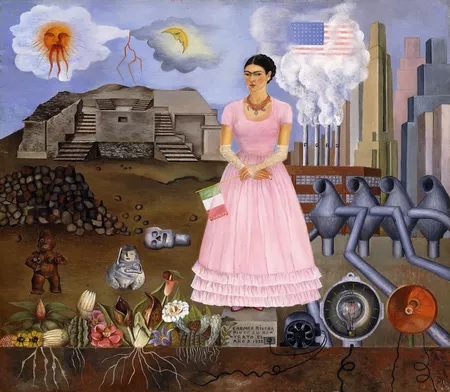
Frida Kahlo ‘Self-Portrait on the Border Line Between Mexico and the United States’ 1932
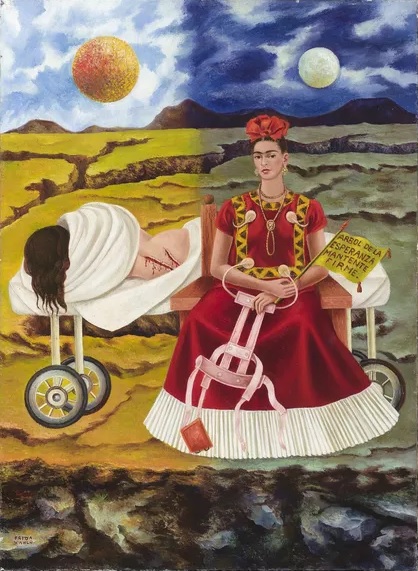
Frida Kahlo ‘Arbol de la Esperanza (Tree of Hope)’ 1946
Earlier this December, I took on Parra-Velasco’s homework assignment for her Harvard Extension students, counting how many times I could find Frida on my five-block walk to the subway in Crown Heights, Brooklyn. I encountered her first on my fridge, in the form of a tchotchke magnet hand-me-down from a former roommate; I next saw her in a wall mural on Franklin Avenue. I caught a glimpse of Kahlo one last time before I descended down into the Franklin Avenue subway stop—she stared at me from a poster inside a storefront window.
Kahlo’s face may have been co-opted over the years, but she is still a defiant female presence in a male-centric world, a fearless and groundbreaking artist who defined her own image.
Source: Artsy







